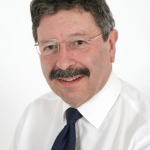The Ninth Summit of the Americas is expected to see the nations of the hemisphere outline the support they need to achieve sustainable post pandemic recovery. David Jessop writes that central to this will be how Washington responds, and whether it is willing to accommodate partnerships with others that may lessen its influence.
In June the Summit of the Americas will take place in Los Angeles. By then the world will likely be a very different place. Sharper lines will have been drawn between the US, its allies and Russia, as well as with Washington’s main strategic adversary, China.
The cause is the Ukraine, a country far distant from the Caribbean, where third parties are setting the stage for a future world that will look and be very different.
Whether President Putin decides to bear the cost of a limited but likely long lasting military intervention in its ‘near abroad’, in a nation he describes as being in “the same historical and spiritual space” as Russia, or alternatively manages to reach an accommodation with the US and a divided Europe, the outcome will be the same: the re-emergence of spheres of influence.
Speaking on 19 January, President Biden said that if Russia were to move against the Ukraine, it would be “the most consequential thing that’s happened in the world, in terms of war and peace, since World War Two”. The world is at an inflection point in history, he said, and will see more change in the next 10 years than in the last 50 because of technology and fundamental alterations in alliances.
For these reasons, the coming Summit of the Americas is likely to be unusually important as it will require the US to define its future role in the hemisphere and the extent to which it accepts and can adapt to Latin America and the Caribbean’s now diverse intra-regional and international ties.
By contrast to the first such summit in 1994 which focussed on post-cold war regional partnerships in trade, aid, and security, this one may seek to do the same, but for the opposite reason.
President Biden, has said in a statement that the focus at the 2022 meeting will be on “building a sustainable, resilient, and equitable future” for the hemisphere. Promisingly, he noted that “The vital national interests of the United States are inextricably bound to the fortunes of our closest neighbours in the Americas” and “To that end, the ability of our democracies to close the gap between what we promise and what we deliver depends in no small part on what we do, together, to make it better”.
At best one hopes the summit will enable the Biden administration to set out clearly its perspective on future relations with what many in the US still regard as a version of its own near abroad, how it intends stimulating sustainable hemisphere-wide post pandemic recovery and growth, and whether it intends accommodating nations that have developed strong economic partnerships with China.
If it is realistic about finding new ways to embrace the Americas, the US Administration will also need to articulate how it intends responding to the likely consolidation of leftward trends in the Americas.
Former Brazilian President Lula da Silva looks likely to win his country’s Presidential race in October. Colombia’s President Duque’s electoral position is insecure. US policy in Venezuela has failed. Mexico’s President is actively trying to rebalance the US relationship. And the OAS Secretariat has become a divisive hemispheric force. Moreover, significant divisions exist over the failure of the US to adopt a thoughtful post-Trump Cuba policy that humanely recognises the hardships being experienced by most Cubans, or to rationally address where Washington’s policy of pressure through sanctions could lead.
To complicate matters it is unclear whether the Biden administration will invite the Heads of Government from states like Nicaragua and El Salvador it regards as authoritarian; let alone how the summit’s outcome may be affected by the painful awareness among the US’s many friends that a returning President Trump, or a Republican in his shadow, will reintroduce a transactional approach intended to benefit only ‘the willing’ or acquiescent in the Americas.
Whatever happens next between Russia and the US in relation to the Ukraine will require Caribbean nations to determine how in a tripolar world with vying spheres of influence it will manage far into the future the international relationships the region has developed.
The summit offers the region’s nations a unique opportunity to redefine within the context of the Americas the nature of its future engagement with the US, and if it wishes, how this relates to rapidly developing intra-hemispheric relationships between Brazil and the Guianas, its ties with Cuba and Venezuela, its links to Mexico and Colombia, and an ever-widening range of international partners including China, India, and nations in the Gulf.
As Prime Ministers Gaston Browne and Mia Mottley have separately pointed out, addressing the Caribbean’s big asks requires the delivery of support that facilitates climate change adaptation, resolving the problem of the region’s graduation out of concessional development financing, agreeing a basis for post-pandemic debt forgiveness, and making rapid progress on a sustainable energy transition.
Many of those in Washington and South Florida who influence US policy still lack an understanding of why relations with much of the hemisphere are poor, or the frustration felt about platitudes, and the slow delivery of past promises. They have yet to recognise that this time around, east-west confrontation will not be about manipulation of the kind associated with the Monroe Doctrine, but about positioning effective economic support in areas that relate to the complex social issues that Caribbean and Latin American nations need to address.
If the US fails to deliver others are waiting in the wings.
China has extensive well-funded programmes and detailed country by country policies for economic engagement, as to a lesser extent does the European Union.
A few days ago, Russia’s Foreign Minister, Sergei Lavrov, told the Duma, the country’s lower house, that the Russian government is seeking to deepen its relations with the Latin American and Caribbean region. Underscoring its close relationship with Cuba, Nicaragua, and Venezuela, he made clear Russia is seeking to broaden this, and has been discussing with Mexico the creation of a mechanism that would link it to the Community of Latin American and Caribbean Countries (CELAC), the entity that excludes the US and Canada.
US influence in the Americas, while potent, is waning. Washington needs to find better ways to embrace change. To observe this is not to ignore or denigrate the importance of shared values, the multiple special ties that exist, or geographic proximity. Rather it is to suggest that in today’s much-changed hemisphere, achieving influence will require nuanced social and economic responses that demonstrate the US is a committed and genuine partner in Caribbean and Latin American development.
David Jessop is a consultant to the Caribbean Council and can be contacted at david.jessop@caribbean-
Previous columns can be found at https://www.caribbean-council.
February 4th, 2022
David Jessop is a consultant to the Caribbean Council. The views expressed are his own.




